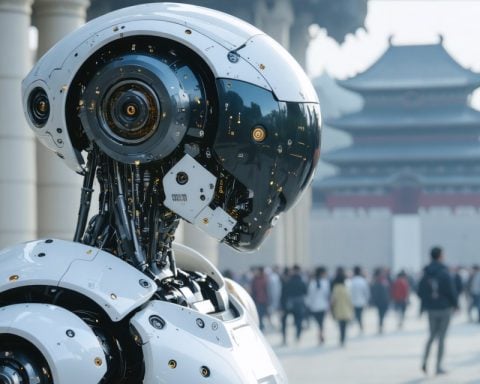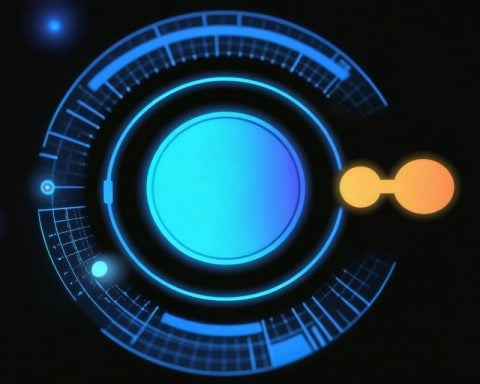Understanding Battery Choices for Floor Cleaning Machines
In the world of floor cleaning machines, the choice of battery is crucial. Numerous manufacturers are now shifting toward lithium-ion (Li-ion) batteries, revolutionizing how cleaning is done across various facilities. These batteries offer remarkable energy density and charging speed, enabling machines to operate longer with minimal downtime.
Li-ion batteries can function effectively even when partially charged, which is a significant advantage over traditional battery types. They boast an impressive lifespan of eight to ten years, making them a financially sound option, despite their higher initial cost compared to valve regulated lead-acid (VRLA) and flooded lead-acid batteries.
While VRLA batteries provide a balanced solution for industrial applications, offering three times the cycle life of flooded lead-acid, they still fall short of the longevity offered by Li-ion. Flooded lead-acid batteries can be budget-friendly but require more maintenance and present safety risks due to potential spills.
Each battery type serves different operational needs. For example, large warehouses favor Li-ion due to its performance and long cleaning durations, while smaller retail stores may opt for the cost-effective and straightforward approaches of flooded lead-acid batteries.
Ultimately, with the increasing emphasis on sustainability and efficiency in cleaning operations, the industry is pushing toward a future dominated by Li-ion technology, as it supports not just productivity but environmental goals, too.
The Eco-Friendly Shift: Battery Choices in Floor Cleaning Machines
The choice of battery technology in floor cleaning machines is more than just a matter of operational efficiency; it has far-reaching implications for the environment, humanity, and the economy. The shift from traditional battery types to lithium-ion (Li-ion) technology reflects a broader trend toward sustainability that resonates with the challenges of our rapidly evolving world.
Lithium-ion batteries are becoming the gold standard in the cleaning industry due to their remarkable energy density and rapid charging capabilities. This advancement allows cleaning machines to operate longer and with less downtime, significantly increasing productivity. By reducing the frequency of recharging and enabling machines to work more effectively between maintenance cycles, organizations can achieve better operational efficiency. This, in turn, reduces the overall carbon footprint associated with cleaning activities.
From an environmental perspective, the benefits of Li-ion batteries extend beyond mere convenience. Their longevity, typically eight to ten years, translates to less waste generation compared to traditional valve regulated lead-acid (VRLA) and flooded lead-acid batteries, which have shorter lifespans and require more frequent replacements. Reducing the disposal frequency not only minimizes the environmental impact related to battery disposal but also lessens the demand for new resources needed to manufacture replacement batteries. This is especially important given the environmental degradation often associated with mining and manufacturing processes.
On the economic front, while Li-ion batteries come with a higher upfront cost, their long-term savings and efficiency can lead to significant financial benefits. Organizations adopting this technology can expect lower maintenance costs and improved operational uptime, which can contribute to better profit margins. The shift has the potential to reshape economic dynamics within the cleaning industry, aligning profitability with sustainable practices—a crucial factor as the world grapples with climate change and seeks greener alternatives across all sectors.
Humanity also stands to gain from this technological shift. As more organizations move toward sustainable cleaning solutions, they contribute to a larger collective effort to reduce greenhouse gas emissions and resource consumption. This not only addresses immediate environmental concerns but also fosters innovation and development of new technologies, paving the way for further advancements in energy efficiency and sustainable practices.
The adoption of lithium-ion batteries in floor cleaning machines illustrates a microcosm of a larger trend toward sustainability that could define the future of humanity. As industries make conscientious choices focused on minimizing environmental impact while enhancing productivity, we inch closer to a future where economic growth aligns with ecological health. The future we envision—a world where sustainability and efficiency are intertwined—is within reach, as the decisions we make today echo into generations to come.
In conclusion, the transition to lithium-ion batteries in floor cleaning machines exemplifies a significant step toward a cleaner and more sustainable future, impacting not only the way we approach cleaning but also shaping the broader narratives of environmental stewardship and economic resilience in the face of global challenges.
Revolutionizing Floor Cleaning: A Deep Dive into Battery Technologies
Understanding Battery Choices for Floor Cleaning Machines
In today’s fast-evolving world of floor cleaning machines, choosing the right battery is paramount for optimal performance. With the rise of new technologies, many manufacturers are transitioning to lithium-ion (Li-ion) batteries, which are transforming cleaning practices in various industries.
Advantages of Lithium-Ion Batteries
Li-ion batteries are celebrated for their exceptional energy density and rapid charging capabilities. This technology enables machines to run longer while minimizing downtime—a crucial factor in high-demand environments. Not only can Li-ion batteries operate efficiently even when partially charged, but they also boast an impressive lifespan of eight to ten years. Although the initial cost of these batteries is higher than that of traditional types, their longevity and reduced maintenance needs often make them a more economical choice in the long run.
Comparison with Traditional Batteries
Traditional battery options, such as valve regulated lead-acid (VRLA) and flooded lead-acid batteries, still play a role in the industry. VRLA batteries provide a viable solution for many industrial applications, delivering three times the cycle life compared to their flooded lead-acid counterparts. However, they do not match the durability and efficiency of Li-ion batteries. Flooded lead-acid batteries may be more budget-friendly upfront, yet they come with higher maintenance requirements and potential safety hazards due to the risk of spills.
Market Insights and Trends
The cleaning equipment market is witnessing a noticeable trend towards lithium-ion technology. Large warehouses and industrial settings increasingly favor Li-ion batteries as they enhance operational efficiency and reduce environmental impact. Smaller retail spaces may still lean towards the cost-effective flooded lead-acid batteries due to their straightforward implementation and lower upfront costs.
Sustainability and Environmental Impact
As industries strive for greener operational practices, the shift towards Li-ion technology represents a significant advancement in sustainability. Lithium-ion batteries contribute not only to improved productivity but also align with broader environmental goals, as they generally have a smaller carbon footprint throughout their lifecycle compared to traditional battery types.
Pros and Cons of Battery Types
| Battery Type | Pros | Cons |
|———————–|————————————————–|————————————————-|
| Lithium-Ion | Long lifespan, high energy density, quick charging | Higher initial cost |
| VRLA | Good cycle life, lower cost than Li-ion | Shorter lifespan compared to Li-ion |
| Flooded Lead-Acid | Lowest initial cost, easy availability | Requires maintenance, spills can be hazardous |
Future Predictions
Looking ahead, predictions indicate that Li-ion technology will continue to dominate the floor cleaning equipment market, driven by advancements in battery technology and a strong push for efficiency. Manufacturers are likely to invest further in research and development to improve the performance and sustainability of Li-ion batteries, making them even more attractive for diverse applications.
Conclusion
In conclusion, the evolution of battery technology in floor cleaning machines underscores the importance of choosing the right power source to enhance cleaning efficiency while supporting sustainability initiatives. As industries advance, lithium-ion batteries are set to become the preferred choice, signaling a significant shift in cleaning practices.
For more insights and detailed information on floor cleaning machines and battery technology, visit link name.












